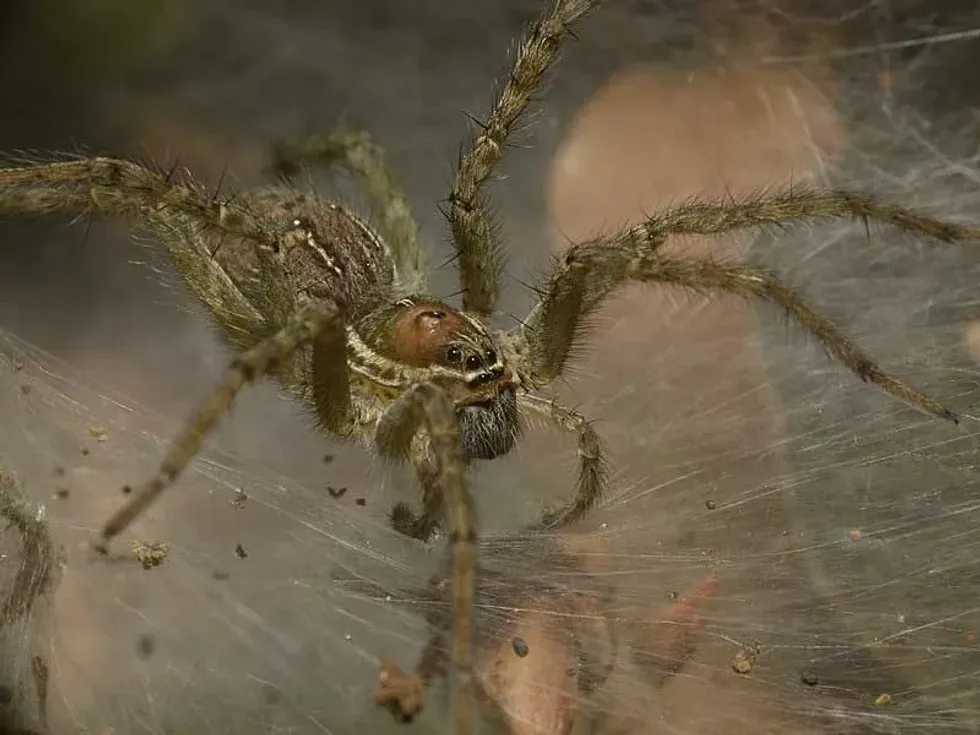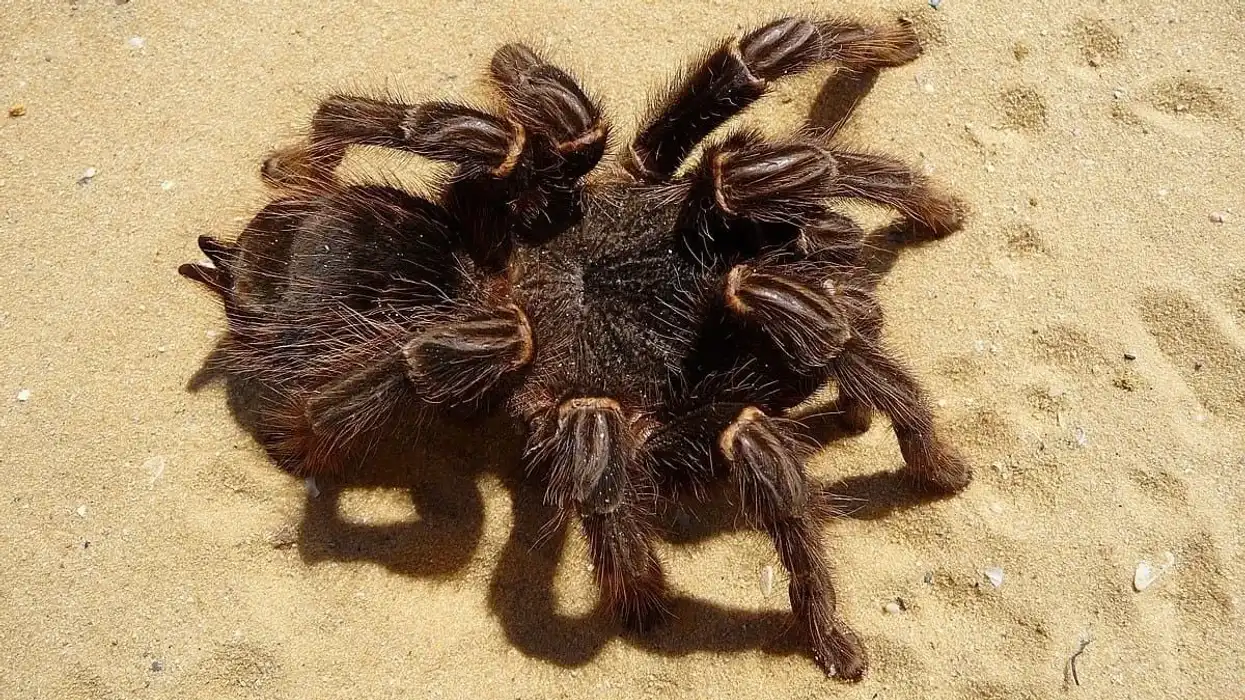Funnel-web spiders are found on the eastern coast, majorly in Australia. They are infamous beings of the spider fauna. Found in Eastern Australia, funnel-web spiders are renowned for their dangerous and poisonous venom that has fatal potency.
To date, approximately 13 casualties have been reported due to the highly toxic spider bites. A victim of the poisonous spider bite was a child who died within 15 minutes of the dangerous funnel-web bite.
Few spiders of the species are dangerous while the majority of spiders in the world are harmless. It is among the prominent species of Australian spiders. It remains a subject of fear and captivation among the locals of that region.
There are over 40 species in three genera in the family of Atracidae. In the genus of Atrax, Atrax robustus is one among the three in the family.
Out of the three species, only two are proved to inflict toxic and fatal bites on humans. The females of the Atracidae family are known to have bigger builts than their male counterparts. The body colors of the funnel-web spiders can be mainly found in darker hues, ranging from black to brown.
They have a shiny carapace and four spinnerets. Their lower lip is studded with blunt spines.
Sydney funnel-web spider can be seen in an Australian museum. You will be able to see their funnel webs. This article covers Sydney funnel-web spider facts, Australian funnel-web spider facts, funnel-web spider facts for kids, and other funnel-web spider facts and information like body length, medium to large funnel-web spiders, and so on.
For more relatable content, check out these tarantula spider facts and Brazilian wandering spider facts.
Funnel-Web Spider Interesting Facts
What type of animal is a funnel-web spider?
Funnel-web spiders belong to the Atracidae order of spiders. They have been named funnel-web spiders due to the funnel-shaped burrows that they use to prey and hunt.
They are notorious for their deadly species such as male Sydney funnel-web spiders. Spider bites are supposed to be fatal since they are highly toxic in nature.
There are several species of funnel-web spiders that are found in Sydney, stretching up to the Central Coast in the north and to the Illawarra region in the south. They are even found in the west at the Blue Mountains in New South Wales.
What class of animal does a funnel-web spider belong to?
Funnel-web spiders are a kind of spider that belong to the kingdom of Animalia and the class of Arachnida.
How many funnel-web spiders are there in the world?
The status of funnel-web spiders is not extinct as of the present date. They are found abundantly in their regions of habitat around the world. There are over 40 different species distributed among three genera of funnel-web spiders.
Where does a funnel-web spider live?
Found majorly in Australia, within a 100 mi (160 km) radius of Sydney, funnel-web spiders can be seen in the damp forest regions of the eastern coast. They are spotted in the relatively drier open forests of western slopes of the Great Dividing Range and the Gulf Ranges of South Australia.
They are also found in the highlands of Australia from Tasmania to North Queensland and New South Wales. The Sydney funnel-web spider can be seen in Australian museums.
What is a funnel-web spider's habitat?
Several species of funnel-web spiders tend to nest up in webs under lush and moist gullies beneath rocks and fallen wood. They also build webs under houses in the moist soil, cracks in rockeries in gardens and yards, and heaps of compost and manure. They tend to accommodate well in stable environments with low temperatures and high humidity.
Who do funnel-web spiders live with?
Like other fauna, funnel-web spiders too live and move around in packs. The male funnel-web spiders live alone in their webs whereas the female counterparts live together in packs of approximately a hundred.
How long does a funnel-web spider live?
Like a lot of species of spiders, funnel-web spiders, too, are nocturnal. Many of them are fast runners and they are chased away by light. Typically, they live for less than twelve months, probably within six to nine months of maturity.
They find it tougher to survive in cold weather than in warm conditions. In warmer regions, they can live up to two years. Females live longer than males since they rarely leave their webs or burrows except when forced out by flooding.
They live almost ten years or more. Male funnel-web spiders tend to move around looking for a mate. They die after mating a few times.
How do they reproduce?
The male funnel-web spiders often leave their habitats in autumn and summer in search of a mate. They often come in contact with humans during this time of the year. The females hardly leave their burrows.
The female funnel-web spiders produce a silk egg sac, that is pillow-shaped. She lays over 100 eggs in the sac at a time. She turns and cleans the egg sac several times during the period of incubation.
She defends it aggressively if there is any attack or disturbance. It takes about three weeks for the spiderlings to hatch. The offspring of funnel-web spiders are raised inside the webs or burrows.
The offsprings live with the mothers for a few months. They leave their burrows to make their own webs. The juvenile funnel-web spiders turn into wanderers.
What is their conservation status?
Funnel-web spiders are of Least Concern according to the IUCN. They are found in plenty in their regions of existence. They are conserved at The Australian Reptile Park. They have harbored over thousand funnel-web spiders to extract their venom to find an antidote against their fatal sting and eventually find a cure.
Funnel-Web Spider Fun Facts
What do funnel-web spiders look like?

Funnel-web spiders are larger in size compared to the other counterparts of the family. Their size ranges from 0.4-2 in (1-5 cm), depending on the species.
They have a shiny head and thorax. Some of the spiders of the species strangely resemble tarantulas due to their closely similar features. They are found in dark colors of black, black-blue, dark brown, and dark plum.
Female funnel-web spiders are bigger than their male counterparts. They have a large abdomen and relatively shorter legs. Funnel-web spiders have their eyes closely grouped together.
They have fine hair, almost velvety in structure over their abdomen. Funnel-web spiders have sturdy and shiny limbs. They have a row of teeth on the groove of their fangs and another row on their claw pairs.
Their fangs point towards their body and not against each other. They have an ample amount of venom glands that are situated within their chelicerae. The fangs of funnel-web spiders are large and capable of penetrating soft shoes or a human’s fingernail.
How cute are they?
Funnel-web spiders are far from being cute. They are among the most dangerous species in the spider of fauna, which possess natural venom that is harmful enough to kill.
How do they communicate?
There are signs that indicate funnel-web spiders of certain things. For example, male funnel-web spiders often wander by leaving their webs or burrows post maturity in search of a mate. They are attracted by the pheromones of female funnel-web spiders.
How big is a funnel-web spider?
Funnel-web spiders are relatively bigger in their family. They are about 0.4-2 in (1-5 cm) long. Female funnel-web spiders are stockier than their male counterparts. They are bigger than mouse spiders.
How fast can funnel-web spiders move?
Funnel-web spiders often flee from light and are pretty quick runners.
How much does a funnel-web spider weigh?
Their weight is almost negligible.
What are the male and female names of the species?
There are no sex-specific names for male or female funnel-web spiders.
What would you call a baby funnel-web spider?
The offspring of funnel-web spiders are called spiderlings.
What do they eat?
Funnel-web spiders prey on vertebrates like frogs, lizards, beetles, cockroaches, snails, and other small insects.
Are they harmful?
Yes, among the spiders in the world funnel-web spiders are fatally injurious to humans. There are three genera of funnel-web spiders - Agelenidae, Hexathelidae, and Dipluridae. Among the three, Agelenidae is a non-dangerous species.
They are also called funnel weavers. They are not detrimental to human beings.
Hexathelidae, also known as Australian funnel-web spiders are dangerous to humans as their bites are venomous. These genera contain the Sydney funnel-web spiders who are known to be particularly dangerous and the Northern tree funnel spiders. They both are listed as the deadliest of the species.
Would they make a good pet?
No, funnel-web spiders won't make good pets due to their highly venomous physical characteristics.
Did you know...
The male funnel-web spiders are comparatively more dangerous than the female spiders since they carry a larger amount of toxic venom that harms humans.
Funnel-web spiders have positive economic importance for humans. The silk made by Sydney funnel-web spiders is utilized as crosshairs, especially in optical instruments.
The funnel-web spider bite
Their venom severely affects the human nervous system and death can occur at an alarming pace. Therefore, immediate medical attention is required if a person is bitten by a funnel-web spider.
Their fangs are larger than that of a brown snake. Their bite is more painful than the bite of other spiders due to the size of their fangs, toxicity, and their tendency to cling to the skin if not immediately brushed away.
They leave a fang bite mark. Funnel-web spiders are kept at The Australian Reptile Park to extract their venom to develop an antidote and find a cure.
The funnel-web spider's web
The webs of funnel-web spiders are lined with opaque silk that is white in color. It has sturdy threads of silk starting from its entrance. The entrance is usually in the shape of a T or Y.
The webs are woven into a funnel. They typically build their webs in rotting trees or moist soil. The inside of their burrows is lined with silk.
They build silk trip wires outside their burrows to protect themselves from predators. It is a key feature to identify their dwellings. Their shelters have been found as much as 98.4 ft (30 m) off the ground.
Here at Kidadl, we have carefully created lots of interesting family-friendly animal facts for everyone to discover! Learn more about some other arthropods from our six-eyed sand spider facts and orb-weaver spider facts pages.
You can even occupy yourself at home by coloring in one of our free printable funnel-web spider coloring pages.









